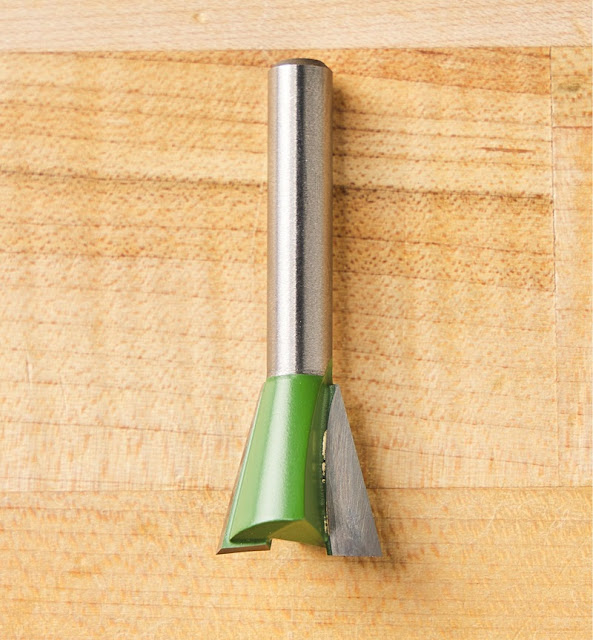15 Types of Wood Router Bits
 |
| source: bobvila.com |
Any profession that has you working either in nature or with materials that are all-natural brings about many benefits that are not noticeable at first. The same goes for woodworking as it helps reduce any stress and anxiety levels by boosting your mood and activating your brain.
That's not only because you're handling wood but also because you're concentrating on one thing at a time. This way you're developing new skills as you get to do more than just cut wood when woodworking. Your creative jug is also being shaken up which means you get to do something without many constraints and is considered a sustainable practice.
Types of Router Bits
Flush-Trim
One of the most fundamental woodworking tools is a router and one of the most essential router bits is a flush-trim bit. These types of router bits are much like other types of bits, they just differ thanks to a bearing at the tip. A flush trim wood router bit for drill is, therefore, able to trim overhanging material so that it comes flush.
Round-Over
 |
| source: idcwoodcraft.com |
Rounding-over or round-over woodworking router bits are the most common edging bits as their rounded profile allows you to work on a 90° workpiece. With a round-over bit, you can create a final product with a smooth finish.
Straight
The most popular and also simplest router bit you'll come across is a straight bit. Considered a general-purpose bit, it can be used to cut either with or against the grain or to make an L-shaped shoulder. You can also use a straight bit to mortise or grove a channel in a decorative fashion.
Moulding
With a moulding bit, you get a solution with different edge-forming profiles but each profile is used for one task and one task only – moulding. This way you don't need several different wood router bits just to do one thing.
Dovetail
 |
| source: powertool.ie |
If you want to be able to make both robust and long-lasting dovetail joints, you should look for a dovetail router bit. These joints are made by cutting pins along one workpiece and tails that match the pins, on another.
Rabbeting
To make L-shaped shoulders or what is known as dados on the edge of a workpiece, you should get a rabbeting bit. Not only are you able to do this with it, but you're also able to form a rabbet joint especially when doing cabinetry.
V-Groove
Made exclusively for when you need to add decorative details, V-groove bits can generate, as you'd expect, a V-shaped profile. You can engrave signs and cabinet faces in any wooden piece as long as it allows for shallow groves to be made along its length.
Spiral-Plunge
A wood router bit for drill that allows you to instantly get a smooth cut without putting too much stress on the tool itself or being the depth at which you can stop, you should go for a spiral-plunge bit. This is thanks to the combination of both a shearing and augering action the bit has.
Core Box
 |
| source: pinterest.com |
When intricate designs and carvings on both hardwood and softwood pieces are something you do every day, core box wood router bits are for you. They allow you to create rounded bottom grooves as well as any decorative cavities. This is thanks to the fluted edges of the bit as they remove material quite well and reduce burning.
Slot-Cutting
As you'd expect, a slot-cutting bit is used to create precise grooves and slots. You can use it on a variety of materials such as MDF, plywood and plastic too. That's because a slot-cutting bit allows you to adjust both the depth and width of your cut.
Cove
Known as cavity drill bits, cove bits let you create decorative edges and concave grooves. A cove bit is the opposite of a round-over bit which is why it lets you make ornamental mouldings as well as picture frames.
Ogee
The ogee or Roman ogee bit has a basic shape but it allows you to make decorative profiles in mouldings. An ogee bit has a concave shape which is coming off its pilot bearing.
Chamfer
 |
| source: ebay.com |
Again, made for decorative edges, chamfer woodworking router bits are also able to join two mitred workpieces. This is because it has proper bevelling power which lets you make mitre cuts no matter how bulky or curved the piece of wood is.
45° Chamfer
Chamfer bits come in at different cutting angles and a common one is a 45° chamfer bit. With it, you can create bevelled edges with a 45° angle to them. You can use this bit on cabinet edges, table tops and shelves too.
Specialty
There are certain actions in woodworking that require the use of specific tools and the same goes for woodworking router bits. Specialty bits can be everything from dish carving bits made to be used inside a bowl to raised panel bits made to shape the edge of a door panel.


Comments
Post a Comment